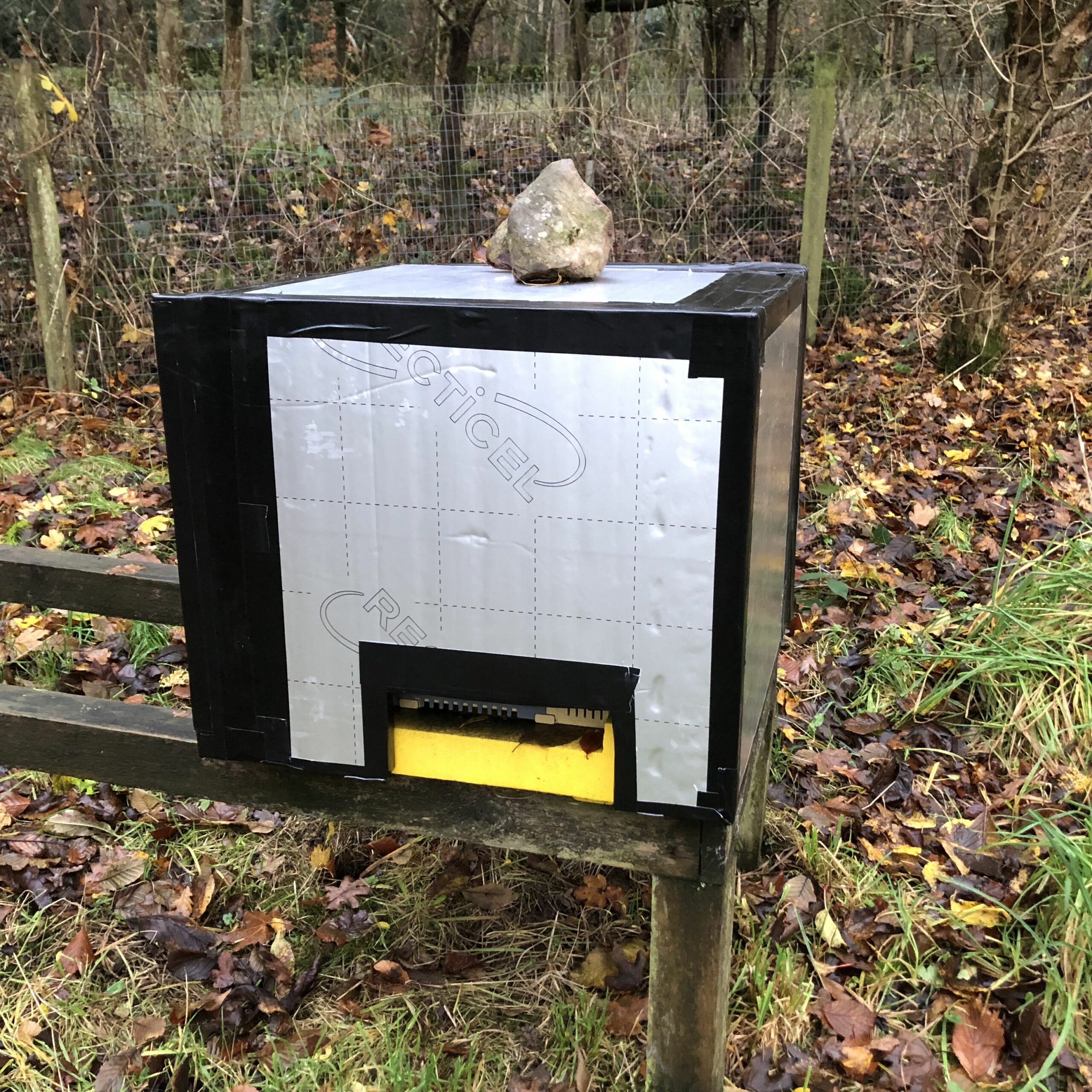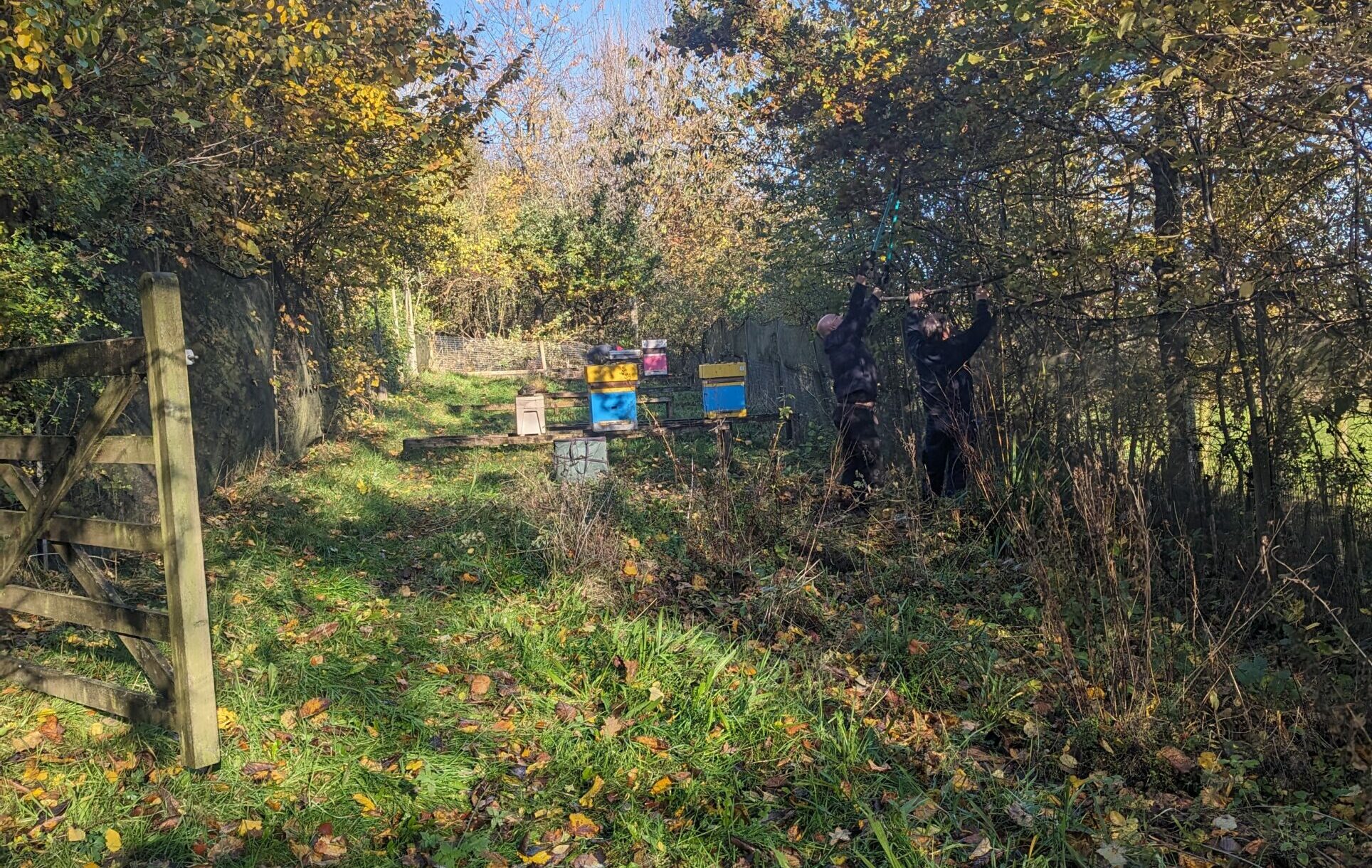Curiosity got the better of me while on holiday on the Orkneys in July. I contacted the local beekeeping association to see if I could visit some Orcadian bees. I quickly received an invite to join club chair John Foster at beekeeper Alan Paton’s house in Orphir on the Orkney Mainland. The bees were in his back garden roughly half a mile equidistant from the seashore and the heather moorland.
But before looking at the bees we partook in the beekeeping tradition of tea and cakes, kindly prepared by Alan’s wife Terri. We sat outside on a warm (16°C) cloudy day looking over the channel to the nearby island of Hoy, chatting over how the bees are kept.
John explained that although the aim on the islands was for the bees to be pure or near pure Apis mellifera mellifera, several years ago a commercial beekeeper had introduced non-natives onto Hoy. He had failed to make a living, but the repercussions of his actions still echoed in the bees’ genetics.
In common with most beekeeping in Northern Scotland, the majority of Orcadian bees are kept in Smith hives. The differences between these and British Nationals are subtle but important. The brood frames are the same size as Nationals but have shorter lugs. It’s often cheaper to buy National frames and cut the lugs short rather than to buy Smith frames. The boxes sit on solid floors, hold 11 frames with a top bee space ( cf. National bottom bee space), are thin walled and have an oblong footprint ( cf. National’s square footprint). This tends to mean the frames are orientated in the cold way. The hand holds are shallow making them less easy to pick up than Nationals. Colonies tend to be small and only require one brood box.
The winters on Orkney are long but not harsh making the beekeeping season short and the queens very prone to halting laying if conditions are not conducive. The main forages are clover, gorse, meadow sweet, bell heather and Ling. As a consequence of the inclusion of heather, most honey is either sold as cut comb or is crushed out of the comb.
Tea and cake over, we started to suit up just as the skies started to darken. I was starting to think that a combination of bad weather and black bees was a recipe for some unpleasant hive inspections. At least the drones knew rain was on its way as they were rushing on mass into the entrances as we approached the hives.
As Allen lifted the crown board from the first hive, I was struck not by the ferocity of the bees, in fact they were reasonably well behaved, but by the complete lack of propolis. John explained this was normal. Trees are rare on Orkney so there is little resin for the bees to stick all the woodwork together. In fact, once the first frame was levered out, a hive tool was unnecessary.
The most important difference between Northern English and Orcadian bees isn’t genetics but the absence of Varroa. This must be a great advantage to colonies on the margins of their natural range. No Varroa requires no varroa treatments which meant I encountered creatures I have never seen before -Braula. These wingless fly parasites have lived with western honeybees for millennia and as a result of co evolution, do little harm to the bees. Sadly, they have been wiped out in most parts of the world by varroacides. Once I had my eye in, one in 20 workers and drones carried these little friends on the backs.
I was surprised to see one drone with deformed wings. Back home we would associate this with deformed wing virus (DWV) which is spread efficiently by varroa. We know DWV was present in colonies before varroa but only at low nonlethal levels which is perhaps what I was seeing here.
Despite it starting to rain, the third colony we inspected appeared relatively calm. Allen’s heart must have sunk as the second frame removed had a sealed queen cell. Then on further frames, two hatched queen cells. No eggs no queen. We didn’t find any virgins but on returning to the second frame, that cell had also hatched and it’s occupant disappeared. With the rain getting harder we closed up, put a bait hive out and hoped the bad weather would encourage the virgin queens to sort things out rather than swarm.
John explained that due to the unpredictable weather, queen mating can be very hit and miss. In Shetland, its even worse and beekeepers are resorting to instrumental insemination to ensure home bred queens are well mated.
With that, the weather drove us indoors for another coffee and biscuits. This was a great opportunity to see bees and to meet up with fellow beekeepers “on the edge”. I’m very grateful to the Orcadian beekeepers, John, Allen and Terri for their hospitality.
Mark Stott







